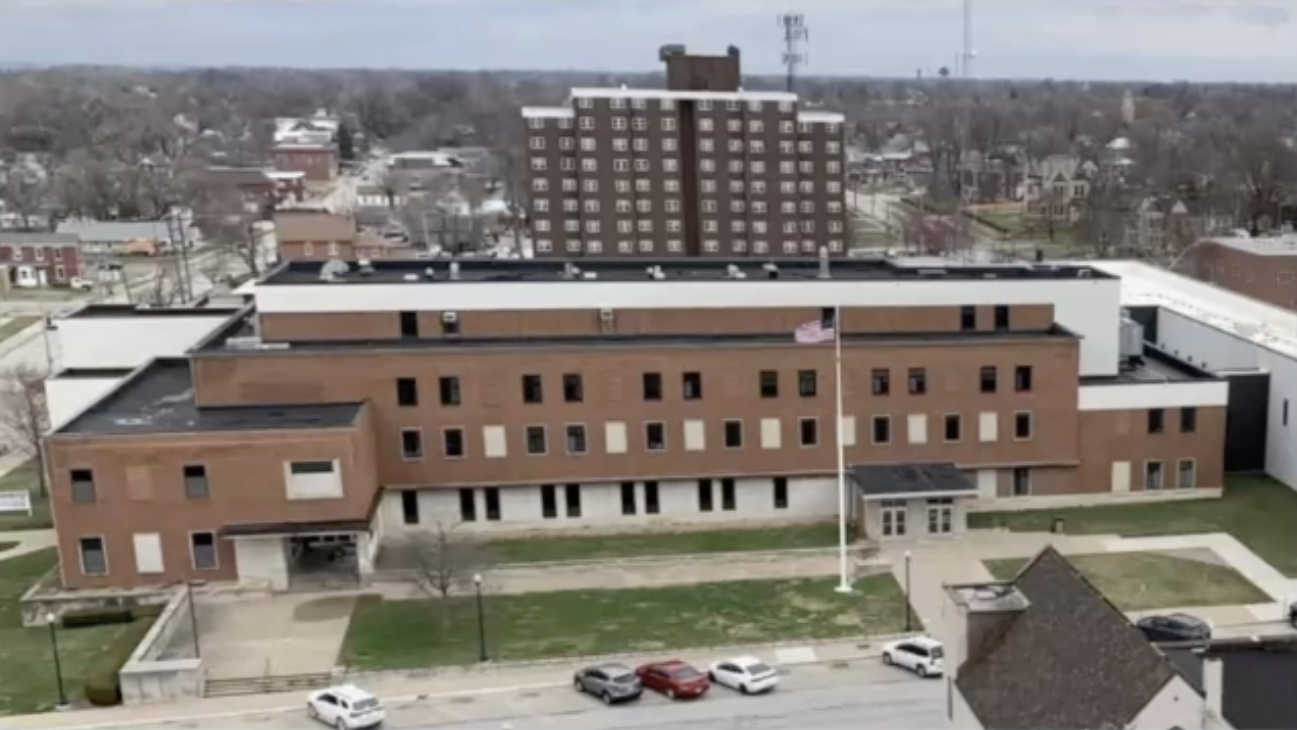Adams County officials proceeding with remediation plan after receiving second report on courthouse mold

QUINCY — A St. Charles, Mo. company tasked with giving Adams County officials a second opinion on how to handle the issue of mold in the courthouse has submitted its findings and the chairman of the Adams County Board said the county plans to proceed with remediation of the problem.
John A. Jurgiel and Associates tested the courthouse building on August 4 and 15 and gave the findings to county officials last week.
Jurgiel conducted its indoor air quality (IAQ) survey “to re-evaluate the air quality in representative portions of this building due to recent concerns for the air quality. A previous survey of the building was conducted by another company (Safestart Environmental) that reached the conclusion that there were significant issues with the indoor air quality in the building.”
Jurgiel’s report also stated while “there were some reports of visible suspected mold growths in various areas of the building, but these suspected mold growths were reported to generally be small in size and not widespread, and many of these suspected mold growths were addressed prior to this survey.”
The new tests were conducted as follows: One bulk, tape-lift sample and 29 air samples for airborne mold spores, including three outdoor, control samples, were collected on August 4 and four bulk, tape-lift samples and 15 air samples for airborne mold spores, including two outdoor, control samples, were collected on August 15. Jurgiel’s report said the Safestart report had “questions regarding the validity of those results based upon how that survey was conducted.”
Jurgiel alleged that Safestart’s survey, which was done in April 2023, included one person dusting surfaces of walls and contents with a “Swiffer,” one person dusting surfaces of HVAC supply vents with a “Swiffer,” one person walking around the Room with a spore trap air sampling device, and one person checking surfaces for suspected mold growths and water/moisture exposures and collecting tape-lift/swab samples.
“The amounts of settled dust on the surfaces sampled by the “Swiffers” was not known, but likely varied
depending on the levels of housekeeping activities in each of the sampled rooms,” the report read.
Remediation suggestions were as followed:
- The results from the bulk, tape-lift samples indicated the presence of mold growths on a previously
removed water-stained ceiling tile and potential early or residual mold growths on a concrete wall in the Subbasement storage areas and in soil in a houseplant.
- The results from the airborne mold spore samples identified indoor amplifications of airborne
Cladosporium and Penicillium/Aspergillus mold spores in portions of the Old Jail, slight indoor
amplifications of Penicillium/Aspergillus mold spores in the Public Defender’s Office and Courtroom 3A, and potential slight indoor amplifications of Chaetomium mold spores in the Back Hallway and the Subbasement Boiler Room. - Continue to keep all windows closed to minimize the infiltration of unconditioned/unfiltered outdoor airbinto the building.
- Review the existing air purifiers in the building to ensure these units do not produce ozone, and implement measures (such as requiring these units to be registered with Facilities) to review any future air purifiers brought into the building to ensure these units do not produce ozone.
- Review oil diffusers and other heat sources to ensure these are equipped with automatic shut-offs or other means to ensure these are turned off at the end of the day.
- Consider prohibiting houseplants in the building, or at least consider limiting the number of plants in an office, cubicle, or desk.
- Consider using a professional plant service to provide and take care of houseplants in the building.
- Seal manhole shafts (not just the tops) in the Subbasement Boiler Room storage areas with concrete and/or foam.
- Thoroughly clean and disinfect the floors, walls, and ceilings in the Boiler Room storage areas, and operate HEPA filtered air scrubbers during these activities.
- Remove and dispose of impacted wood storage shelves and other impacted wood supports/members in the Boiler Room storage areas, and replace these with materials that are not water/mold sensitive.
- Review the HVAC system that services County Board Offices to determine whether unfiltered outdoor air is being introduced (either bypassing the filters or possibly improperly seated filters).
- Review the HVAC system that services Public Defender’s Offices and Courtroom 3A to determine whether excessive outdoor air is being introduced or other issues that may reduce the dehumidification of the air (such as dirty cooling coils).
- Conduct further inspections of the Public Defender’s Offices and Courtroom 3A for potential sources of Penicillium/Aspergillus mold spores and operate HEPA filtered air scrubbers during these inspection activities.
- If no suspected mold growths are encountered during inspections of the Public Defender’s Offices and Courtroom 3A, consider HEPA vacuuming and deep cleaning the carpets in these areas.
- Isolate the Old Jail areas in negative pressure containment areas equipped with HEPA filtered air scrubbers exhausted to the outdoors and conduct deep cleaning activities throughout the Old Jail.
Adams County Board Chairman Kent Snider said the county plans to follow Jurgiel’s suggestions and that the county has already conducted many of the steps.
Snider added he was satisfied with the company’s findings didn’t see the need to look for a third opinion on the matter.
“We’re moving on with remediation of building,” Snider said. “We’ve added the air purifiers, we’re putting in new vents and we’re sealing off the old jail.”
Miss Clipping Out Stories to Save for Later?
Click the Purchase Story button below to order a print of this story. We will print it for you on matte photo paper to keep forever.

